A Trail Blazers Trade Season Primer
Dec. 15 is the unofficial start of the NBA's trade window. Here's what to expect and what to look for.
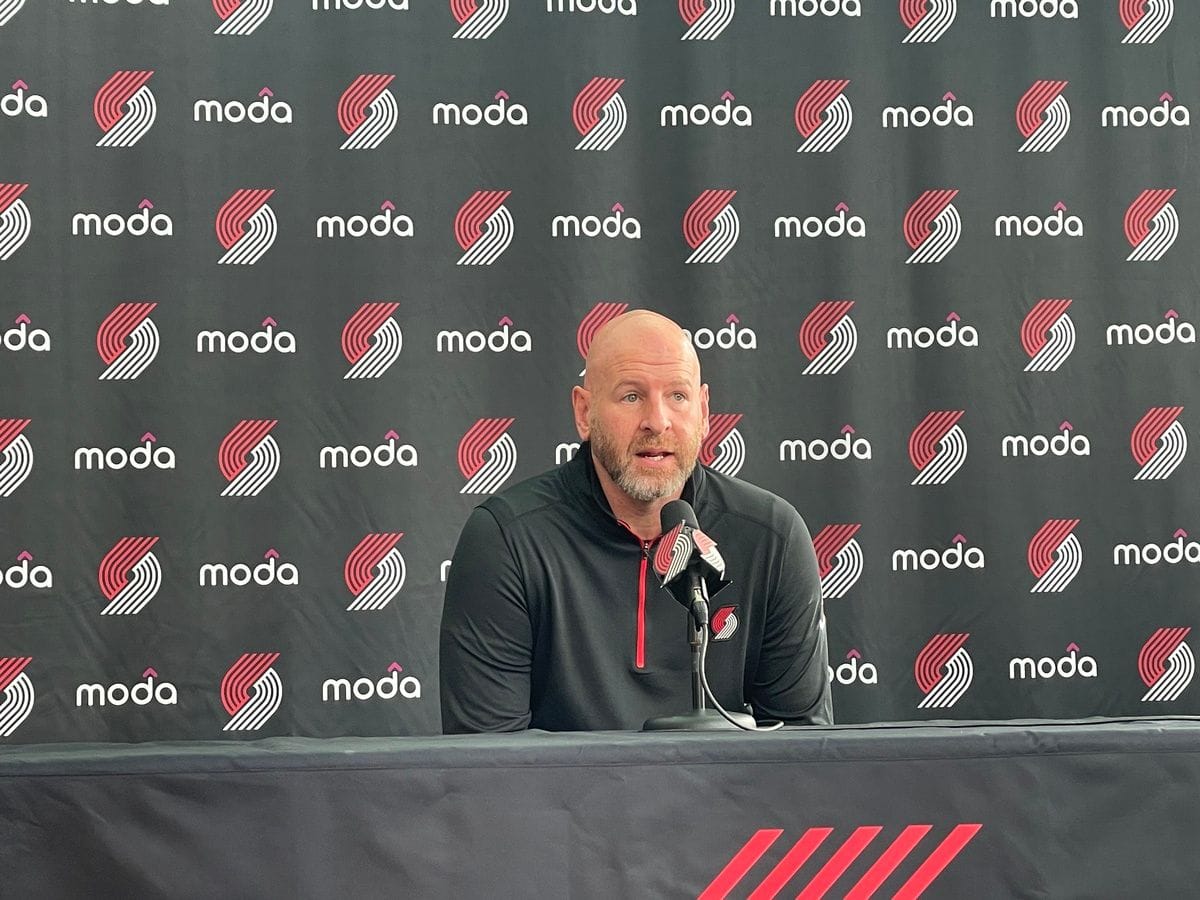
Today is the unofficial start of the NBA's trade season.
Occasionally, a deal will happen in the opening weeks of the season. But Dec. 15 is the date most players who were signed as free agents this summer can be traded (a handful don't become trade-eligible until Jan. 15), so all kinds of possibilities are opened up that weren't previously. The two months between now and the Feb. 9 trade deadline are when deals actually get done.
I expect the Trail Blazers to be active as it gets closer to the deadline. This shouldn't come as a surprise to anyone—general manager Joe Cronin has said consistently since the summer that he doesn't view the roster as it exists right now as being good enough to contend and knows that more moves are needed.
This is what he said in his media day press conference on Sept. 26:
"We know that in order to compete at the highest level in this league, you have to be ridiculously talented and super-connected. At this point, I don’t think we’re either, but I think we have the potential to be. It will probably involve making additions soon, and definitely in the future. But I don’t feel a huge sense of urgency to not give these guys the chance first. I want to see these guys play it out."
The Blazers are firmly in that evaluation phase right now. All indications are that they're happy with where things are, not only when it comes to their record, but with the buy-in Chauncey Billups is getting from players and with their night-to-night effort. Given their injuries and tough early schedule, 16-12 isn't a bad place to be a third of the way into the season.
Still, this is an imperfect roster, with some obvious positional holes and long-term questions about where certain players will fit into the picture. In his first year on the job, Cronin has shown a willingness to take big swings like drafting Shaedon Sharpe and make uncomfortable decisions like trading CJ McCollum, all in the name of maximizing talent and upside. Look for that approach to continue this winter, especially now that his revamped front-office staff is fully in place.
With talks around the league about to heat up in a major way, more rumors and speculation will be out there than ever. Most of it isn't worth taking seriously and exists to make you mad when you see it aggregated on social media. You know who the reliable outlets and reporters are, both locally and nationally, and most of the time the phrase "league sources" from anybody else is just team front-office staffers and agents spitballing about potential deals that are legal but have no chance of actually happening. The great TrillBroDude of the You Know Ball podcast calls this "Slop Season." Be careful out there.
I wouldn't expect Cronin to do anything major until after the first of the year at the earliest, for a variety of reasons I'll get into below. But with the trade window now open, it's worth taking stock of what the Blazers have to work with, what they might look to do over the next two months and why.
The Financial Picture and Available Trade Tools
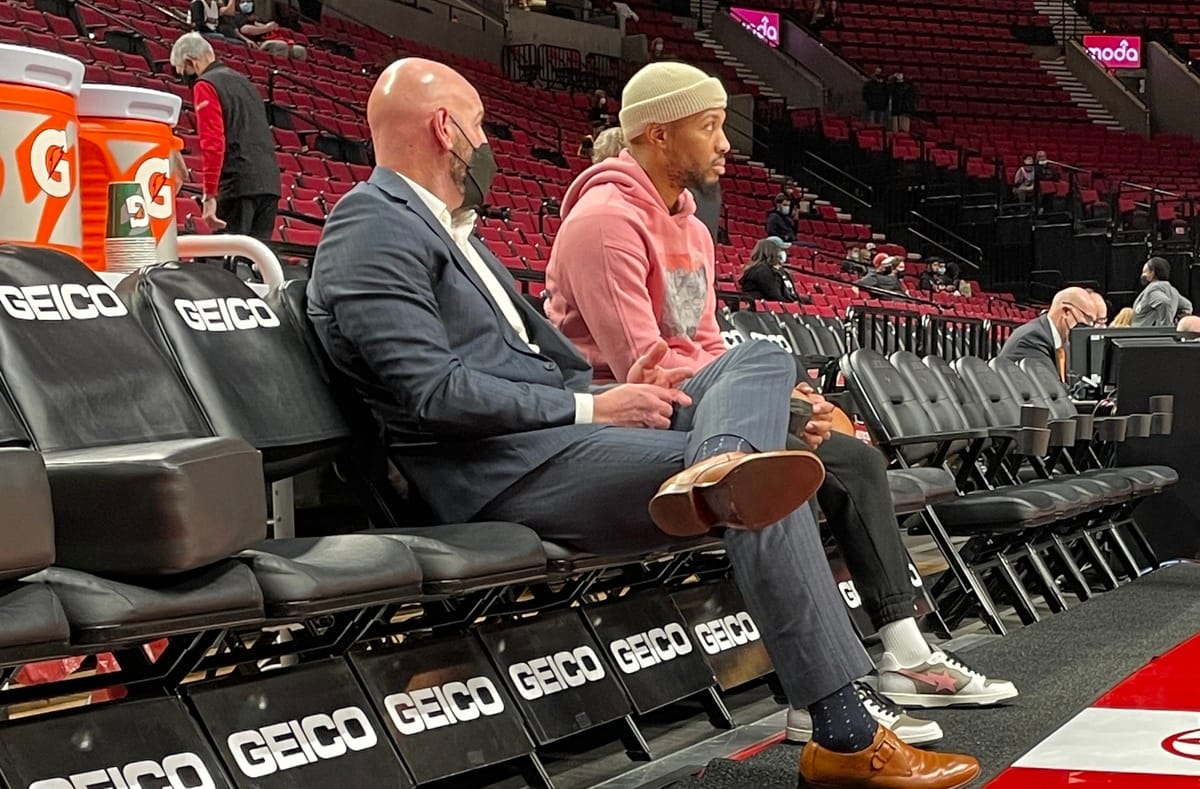
As it stands, Portland is just a hair below the luxury tax line. Like, less than $100,000 under. It's that close.
At last year's deadline, one of the motivations behind the Norman Powell/Robert Covington trade with the Clippers was getting out of the tax. Cronin's justification at the time for that being a priority was that it would take away leverage from other teams trying to extract extra assets in future trades because the Blazers were in the tax. It's fair to be skeptical anytime a GM gives basketball reasons for not wanting to pay the luxury tax, especially when the ownership group has as much money as the Vulcans do, but that was what he said in February, so do what you want with it.
My understanding of the Blazers' current attitude when it comes to the tax is that they'd be willing to go over the line for a real, needle-moving upgrade but not for a marginal addition. They may not want to start the repeater clock for the sake of adding another depth piece that isn't going to swing a playoff series; at that point, they might find it more valuable to keep the full mid-level exception available to play with this summer to add an impact player.
But if someone they feel truly moves up their contending window is out there (let's say last June's O.G. Anunoby pursuit comes back into play, for instance, or things go sideways in Phoenix and Deandre Ayton comes available), I haven't heard anything to suggest they'd turn it down to stay under the tax line.
Assuming Jerami Grant re-signs or is extended as most expect, the Blazers aren't going to have cap space this summer with Damian Lillard, Anfernee Simons and Jusuf Nurkic on big contracts and Josh Hart also potentially due for a new deal if he's not traded. So if they have an opportunity to trade for someone on a big salary, even if they'll need to be re-signed for similar money (Indiana's Myles Turner, currently the holder of the Josh Smith/Brook Lopez/Taj Gibson belt for most years in a row on the trade block, comes to mind), it may be worth doing if they feel it's enough of an upgrade.
Because they used the non-taxpayer mid-level exception to sign Gary Payton II this summer, the Blazers are currently hard-capped at the $156.9 million tax apron. They have a little more than $6 million in wiggle room below that line, so they can't add another major salary without sending out at least close to the same money in a trade.
In addition to player salaries, the Blazers have two trade exceptions they can use before the deadline: one from the Powell/Covington trade for $6.5 million, and one for $3.2 million from a trade you probably don't even remember that involved Nickeil Alexander-Walker and Tomas Satoransky. It's unlikely the smaller one is used; the other one is enough to absorb the salary of a player on a rookie-scale deal or a value contract. But the list of players that check the boxes of a) making that little money, b) being available in February and c) making enough of an impact for Portland to decide it's worth it to go into the tax is very short.
Utah big man Jarred Vanderbilt (making $4.3 million this season) is the most logical candidate, and that's someone Lillard has publicly said he'd like to play with. But if the Jazz make him available, they'll have other suitors that want him for the same reasons Portland would.
That brings us to the matter of picks. As it stands right now, the Blazers are limited in what they can do as far as sending out future draft capital. They owe this year's first-rounder to the Bulls if it falls outside the lottery, part of the previous general manager's summer 2021 trade for Larry Nance Jr. If they somehow miss the playoffs and keep their pick, it goes to Chicago the following year, still lottery-protected, until 2028 at which point it becomes a second-rounder.
Owing this pick to the Bulls limits the Blazers' ability to include future firsts in a trade for a major upgrade—the Stepien Rule prevents teams from trading first-rounders in consecutive years, so they can't send out more firsts until they've given the pick to Chicago. One way around this would be agreeing to lift the protections on the pick and guaranteeing it to the Bulls this year no matter what, which would allow them to trade their first-rounders from 2025 onward in other deals before the deadline. They might be able to get something from Chicago, like a future second-rounder, in exchange for doing this.
But that all depends on if whatever deals are on the table require future picks. If Portland has the opportunity to trade for someone in the Ayton/Anunoby tier who would reasonably take multiple firsts to get, there is a way to make it happen. But if they can get a player like Turner or Jakob Poeltl without it, there’s no reason to mess with their future picks. Barring a season-ending Lillard injury, it’s a good bet the Blazers will be a playoff team this year, in which case they’ll convey the pick to the Bulls and then be totally free and clear to do whatever they want with their first-rounders going forward.
Portland doesn't own its own second-round picks in any of the next four drafts, through 2026, but they do have second-rounders coming in 2024 from Atlanta and either Charlotte or Minnesota (whichever is higher), and a 2027 second-rounder from New Orleans. Any of these could also be included in a deal.
Which Players Might or Might Not Get Traded?
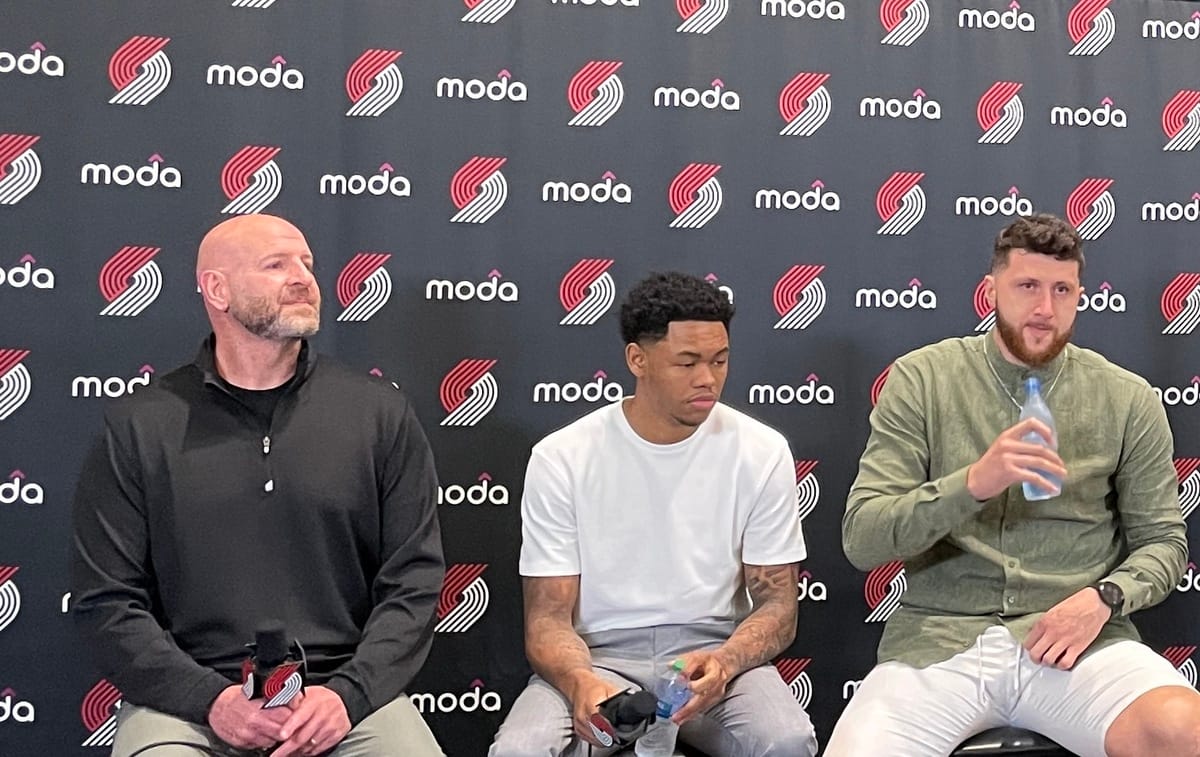
Fanbases get overly attached to most of their teams' players for one reason or another, but the truth is that every team has one or, at most, two players who are truly untouchable in trades. For the Blazers, that's Damian Lillard, and that's it. But there are three other players it's probably safe to file under "not going to be traded."
Anfernee Simons ($22.3 million in 2022-23, $24.1 million in 2023-24, $25.9 million in 2024-25, $27.7 million in 2025-26, trade-eligible on Jan. 15): Simons just re-signed on a $100 million deal this summer and, after a slow start, has been lights-out for the past month. And at 23, he still has a lot better to get.
Jerami Grant ($20.9 million in 2022-23): The Blazers' biggest offseason addition has been a perfect fit, even getting some early All-Star buzz. He's also a favorite of Lillard, who pushed hard to get him to Portland dating back to their summer as Olympic teammates in 2021. The only way Grant might be moved would be if they're worried he will leave this summer in free agency, and I don't see that happening. Whether they agree to an extension after he becomes eligible in January or it's a Simons-style wink-wink deal that gets done minutes after free agency opens on June 30, I don't expect it to even get to the point where Grant has the opportunity to meet with other teams. He seems comfortable here and Cronin, Billups and Lillard are all very happy with what he's brought. He isn't going anywhere.
Shaedon Sharpe ($6 million in 2022-23, $6.3 million in 2023-24, $6.6 million team option in 2024-25, $8.4 million team option in 2025-26): I suppose if Kevin Durant were to theoretically revisit his summer trade request and the Blazers wanted to get in on the bidding, Sharpe would have to be included. But it would take something like that for them to even consider it. They were high enough on Sharpe to draft him No. 7 overall rather than trading the pick for a win-now piece, and he's been ahead of schedule in his development and production as a rookie. He's firmly viewed as part of the long-term future.
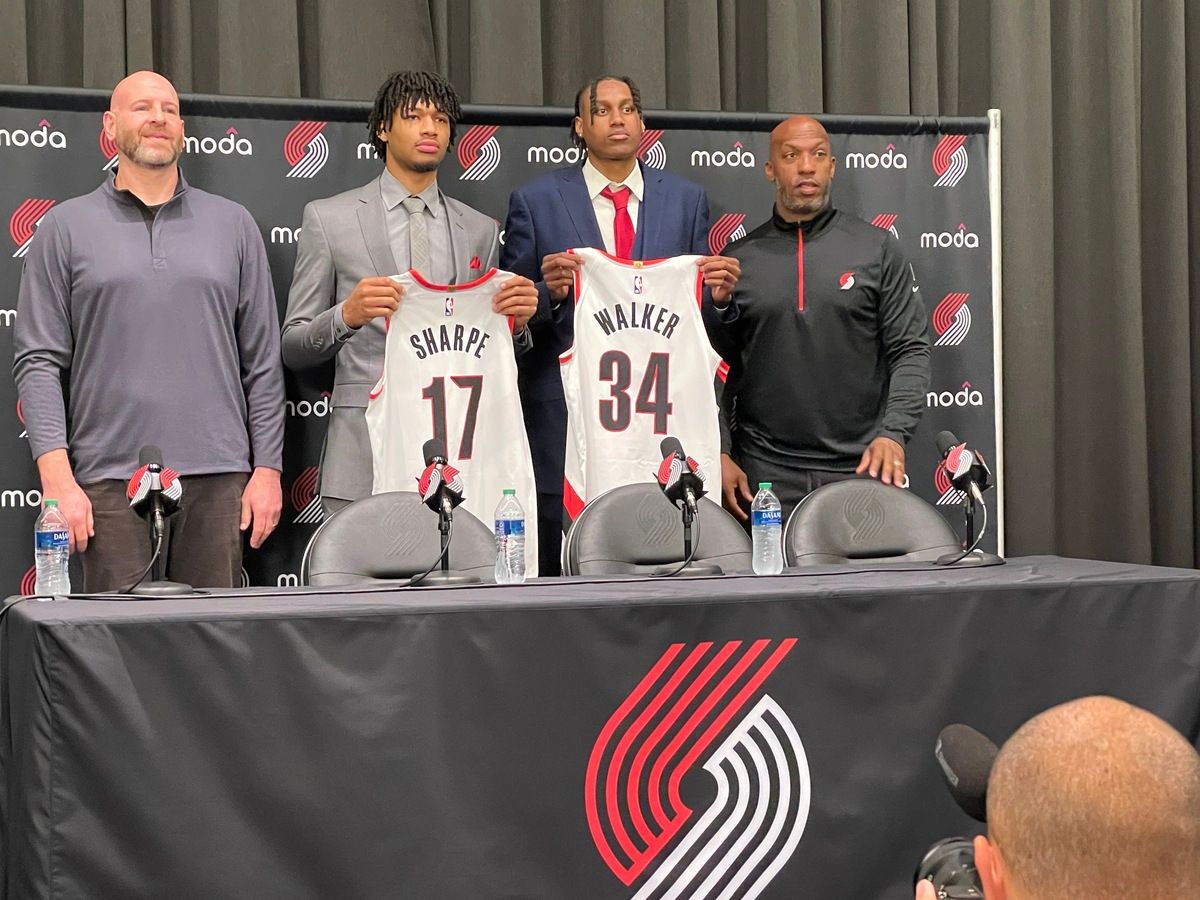
Portland has four players on minimum contracts (Jabari Walker, Greg Brown III, Trendon Watford and Drew Eubanks) whose trade values are negligible, which leaves the other six rotation players to think about.
Jusuf Nurkic ($15.6 million in 2022-23, $16.9 million in 2023-24, $18.1 million in 2024-25, $19.5 million in 2025-26, trade-eligible on Jan. 15): The most polarizing player on the team, and the most logical to be moved out for an upgrade. The Blazers re-signed Nurkic to a four-year, $70 million deal that was, at least in part, payback to Klutch for agreeing to let him be shut down in a contract year last season for a plantar fasciitis injury that he could have and wanted to play through, to help them tank. A four-year, fully guaranteed contract doesn't mean the Blazers view him as a long-term part of the version of this team that could contend in the tail end of Lillard's prime. Nurkic is what he is, a good-not-great starting center whose impact and mood vary night to night, and everyone knows it.
With that said, he might have more trade value than you'd think given his limitations and contract. A few of the teams with potentially available upgrades at center (you know who they are) are tanking teams with almost no substantial contracts on the books who need salaries in the $15-20 million range to be able to use in other trades down the line, and Nurkic fits that bill. He's been as healthy this season as he's ever been post-2019 leg injury, and he's had enough good games that it's not a completely negative value contract like many thought it would be when he signed it.
A lot can change in the next two months, but if I'm handicapping it today, there's a better than 50 percent chance Nurkic is not still in Portland after the deadline.
(A note: because he re-signed with his current team for more than 120 percent of his previous salary, Nurkic can't be traded until Jan. 15, one of reasons I don't expect the Blazers to make any major moves until closer to the deadline. Simons also becomes trade-eligible on Jan. 15, for what it's worth, but again, he isn't on the block.)
Josh Hart ($12.9 million in 2022-23, $12.9 million player option in 2023-24): Hart's future is the biggest decision Cronin has to make before the deadline, and it's a tough position either way.
There will be a fan revolt if Hart is traded. He's been the heart and soul of the team, the personification of the tough, selfless identity they've built this year. He rebounds his ass off, plays through injuries and can run the offense in transition. Billups loves him, and so do all of his teammates. Trading him would hurt and make a lot of people upset.
But they might not have a choice. If they're looking to make meaningful upgrades, Hart is their best bet for a trade chip that will have real value around the league. He's a player who can fit on any team and a personality who can fit in any locker room.
Hart is also due for a new contract this summer, assuming he declines his $12.9 million player option for next season, which is basically a lock because he'll be able to get more than that on the open market. If the Blazers don't trade him, they'll have to either let him walk for nothing or re-sign him to a big long-term contract after also (presumably) ponying up for a new deal for Grant.
Hart may also just find himself squeezed out of the Blazers' future plans on the wing. If Sharpe becomes what everyone thinks he will be a year or two from now, he's going to have to start eventually. Nassir Little and Jabari Walker are also younger and already under contract for a while. With all of those factors, you have to think about moving Hart rather than losing him for nothing, as much as people will hate it.
Decisions like this are what Cronin gets paid the big bucks for. It's going to be uncomfortable no matter which way he goes.
Gary Payton II ($8.3 million in 2022-23, $8.7 million in 2023-24, $9.1 million player option in 2024-25): Payton’s trade value is a complete unknown until he actually plays. Everything I’ve written the past week about his situation still holds true. Assuming he does play at some point and has the impact the Blazers hoped he would when they signed him, I’d imagine they wouldn’t be inclined to turn around and move him. But if they’re trading for a major sure-thing upgrade and need his salary to make the money work, it’s an option.
Nassir Little ($4.1 million in 2022-23, $6.25 million in 2023-24, $6.75 million in 2024-25, $7.25 million in 2025-26, $7.75 million in 2026-27): Going into the final year of his rookie contract, Little signed a four-year, $28 million extension in October. His new deal, which starts next season, doesn't prevent him from being traded, but it makes it difficult because he's subject to what's called the "poison pill" provision. This means that for the Blazers, sending his salary out will only allow them to take back his current salary ($4.1 million) to match, but for the team getting him, the value counts as the average of all five years of his deal (around $6.4 million). It's not impossible but it makes it tricky.
I wouldn't expect Little to be traded before the deadline because questions about his health (he's currently out until at least January with a hip fracture after missing the second half of last season for a shoulder injury) probably mean his value isn't especially high right now, on top of the cap-math issue. The Blazers gave him that extension because they view him as a player they want to build around, and he's played well when he's been healthy. He's not untouchable, but trading him right now wouldn't make a lot of sense.
Justise Winslow ($4 million in 2022-23): Portland will have an interesting decision to make with Winslow here. He’s on an ultra-cheap deal right now, which has been helpful in building this year’s roster, and he’s been one of their most valuable and versatile two-way rotation players. But when he hits free agency this summer, they’ll only have his Early Bird rights, meaning the most they’ll be able to pay to re-sign him is the equivalent of the average player salary. That exact number won’t be known until the new league year begins in July, but when I asked a couple of people with a good handle on these sorts of things, the ballpark estimate I got was a starting salary somewhere around $11 or 12 million per year. That seems like a pretty fair number for Winslow, who I’m sure Cronin and Billups would both like to have back and appears comfortable and happy with his role this season.
But the Blazers’ cap limitation means it’s possible another team comes in over the top of what they can offer this summer. Cronin will undoubtedly have dialogue with Winslow’s agents at CAA about what they’ll be looking for in the offseason. If they think they’ll be able to get a deal done in July that the Blazers can afford, they’ll probably keep him. But if he’s looking for more and they think he’ll be able to get it, it might make sense to get something for him at the deadline rather than losing him for nothing.
Keon Johnson ($2.7 million in 2022-23, $2.8 million in 2023-24, $4.5 million team option in 2024-25): In many ways, Johnson is the perfect trade chip. Teams can always talk themselves into a young player with multiple years left on a cheap rookie contract, and Johnson has shown some stuff in his limited time on the court this season. The Blazers likely don't have a consistent spot for him in the rotation with all their guard depth. Don't be surprised if he's the "sweetener" included with Nurkic for some kind of center upgrade. He'd do well in a situation where he has the opportunity to earn more consistent minutes than he has here.
What are the Blazers Looking to Add?
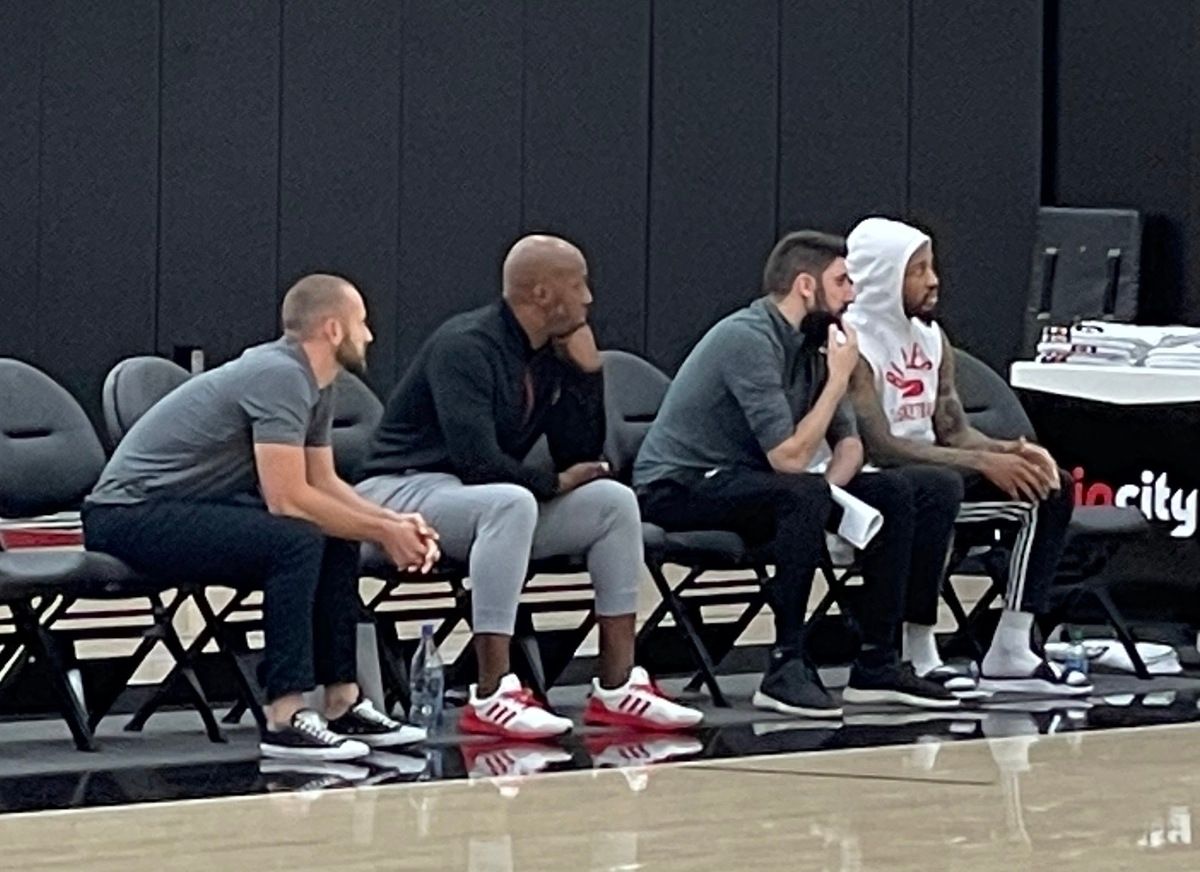
Since last season's teardown, the Blazers have been in pure talent-acquisition mode. They drafted the highest-upside player on the board in Sharpe, and opted to use the mid-level exception on Payton rather than a less talented player whose position might have been more of a need.
Cronin admitted this on media day in saying the roster wasn't as balanced as it could be:
"We realize we’re a little small. In a perfect world, we’d like to be bigger. But at the same time, we did prioritize versatility. Guys that can play multiple positions, guard up and down, play bigger than their size. I would say we lean more towards talent than position, and I think you’ll see that consistently from us. It’s more about getting the best player available than plugging a specific hole. But with that, I recognize there are some limitations there."
The first 28 games of this season are pretty definitive proof of concept that this kind of team—surrounding Lillard and Simons with athletic multi-positional defenders—can work and be competitive. They don’t have to go completely back to the drawing board for the next iteration like they did over the past year. The foundation and identity are there.
There are definite targets out there who would upgrade the Blazers’ talent level and raise their ceiling while fitting seamlessly into that team concept. I have a few educated guesses about who that might be. Some of them have already been discussed here. It doesn’t take a genius to look at the NBA landscape and figure out what might be available and who would make sense. And as more teams pivot to the Victor Wembanyama pursuit and become sellers, players we aren't thinking about right now will inevitably come available.
Next week, I’m flying to Las Vegas for the NBA’s annual G League Winter Showcase. That’s one of the events on the league calendar that serves as a meeting ground for front-office executives from all over the Association. Since it’s so close to the start of trade season, it can be a fruitful event for deals, or at least talks, to start coming together. I’ll find out what I can about what the Blazers are looking to do. All I know right now is they’re going to be aggressive in looking for opportunities to upgrade. What that looks like will become clear over the next two months.
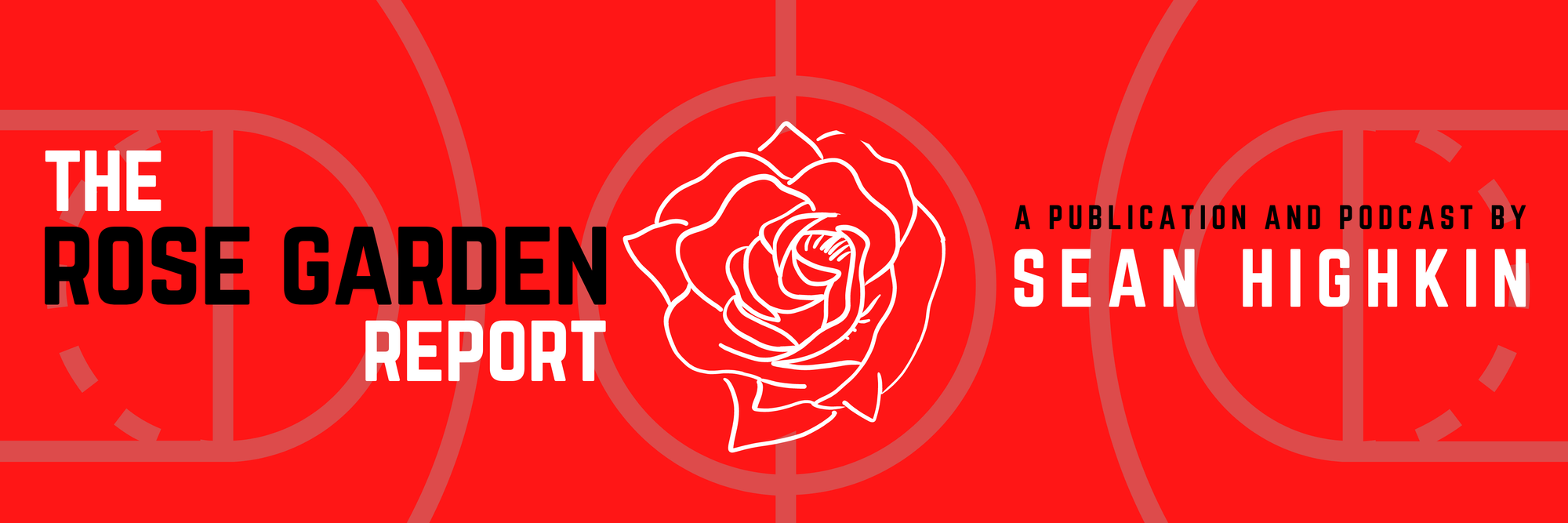
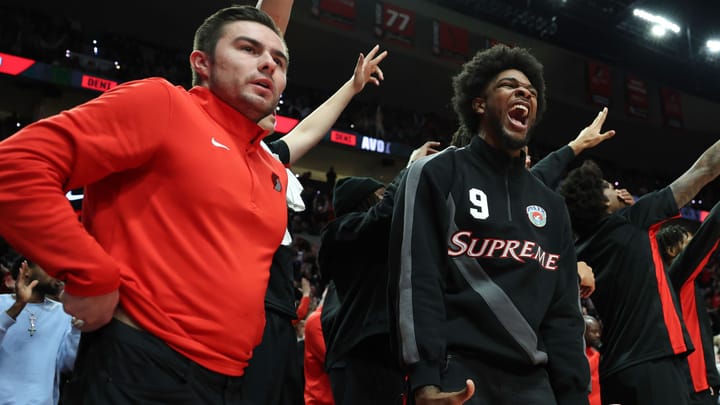
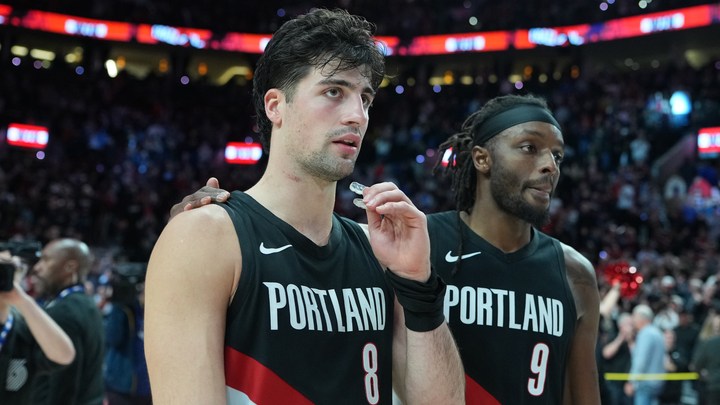
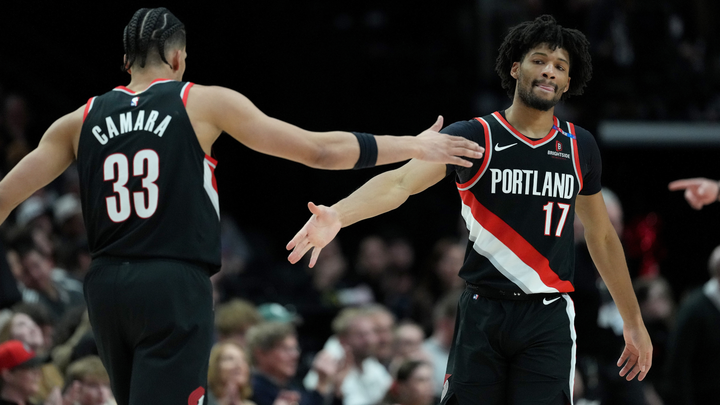
Comments ()